 W
WThe Mitsubishi Group is a group of autonomous Japanese multinational companies in a variety of industries.
 W
WThe F B was an Imperial Japanese Army (IJA) military transport/personnel carrier used for crossing difficult swampy terrain. It was part of a series of vehicles developed by the army in its effort to mechanize and give mobility to their forces. A prior prototype known as the S B swamp vehicle was built, but it proved to be too heavy and cumbersome for its designed use. First produced in 1935, the F B was shorter and lighter than the S B prototype. A total of 146 F B units were built, making it the most numerous model produced of this type of vehicle by the Japanese Army. Subsequent to the F B, a smaller unit known as the T B swamp scout vehicle was produced.
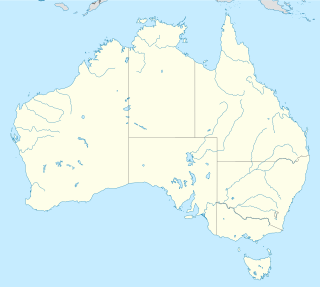 W
WGoonyella Riverside Mine is a large open cut coking coal mine in the Bowen Basin. It is one of many coal mines in Central Queensland, Australia and is located at Moranbah about 30 km north of the township. The mine produced 12.4 million tonnes of metallurgical coal from July 2012 to June 2013. It is owned by the BHP Mitsubishi Alliance. The Goonyella Upper Seam, the Goonyella Middle Seam and the Goonyella Lower Seam are all mined at the site. The coal is well known for its great coking characteristics. Much of the coal was such a high grade, the wash plants were often programmed to add ash to meet the contracted export quality targets.
 W
WThe Gotemba Premium Outlets is an outlet mall located in Gotemba, Shizuoka, Japan, near Mount Fuji. It was opened on July 13, 2000, and contains over 200 stores. The mall is managed by Mitsubishi Estate Simon Co., Ltd., a joint venture between Mitsubishi Estate and Simon Property Group.
 W
WHashima Island (端島), commonly called Gunkanjima, is an abandoned island of Nagasaki, lying about 15 kilometers (9 miles) from the center of the city. It is one of 505 uninhabited islands in Nagasaki Prefecture. The island's most notable features are its abandoned concrete buildings, undisturbed except by nature, and the surrounding sea wall. While the island is a symbol of the rapid industrialization of Japan, it is also a reminder of Japanese war crimes as a site of forced labour prior to and during the Second World War.
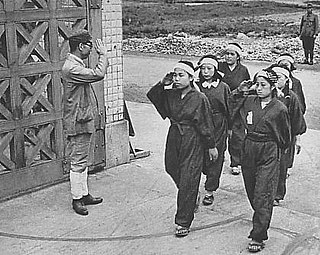 W
WKorean Women's Volunteer Labour Corps or Peninsula Women's Volunteer Corps was the Korean part of the Women's Volunteer Corps, which was created in April 1944 as a work group for Japanese and Korean women. Although its official purpose was to give women a chance to serve the Empire of Japan prior to marriage, it was a means to compel women to perform labor duties.
 W
WThis is a list of vehicles developed from the Japanese Type 97 Chi-Ha medium tank.
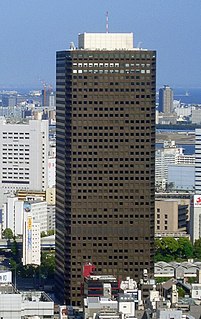 W
WMitsubishi Space Software Co., Ltd. , often abbreviated as MSS, is a corporation in the Mitsubishi Electric corporation series that develops special software, such as space systems. It belongs to the Mitsubishi Group and is one of the member companies of the Mitsubishi Public Affairs Committee.
 W
WMitsubishi Yowa Kai commonly referred to as simply Mitsubishi Yowa or Yowa-kai is a Japanese multisports club based in Sugamo, Tokyo. It is most notable for its football section, also known as Mitsubishi Yowa S.C.. The youth football team is famous for producing many players for the national team, like Kokichi Kimura, Yuichiro Nagai, Yoshizumi Ogawa and Junya Tanaka.
 W
WOno Pharmaceutical Co., Ltd. is one of the largest pharmaceutical companies in Japan. It is headquartered in Chuo-ku, Osaka, Japan, with its major plants in Higashinari-ku, Osaka, and Fujinomiya, Shizuoka., and its central research institute at Minase, Shimamoto-cho, Mishima District, Osaka.
 W
WSeikei University is a private university in the Kichijōji area of the city of Musashino, Tokyo, Japan. Its name derives from a passage in the Records of the Grand Historian by Sima Qian. Its campus is noted for its rows of zelkova trees, which is listed as one of the 100 Soundscapes of Japan.
 W
WThe Sōkō Sagyō Ki , also known as the SS-Ki (SS機/SS器), was a fulltrack engineering vehicle of the Imperial Japanese Army (IJA) introduced in 1931. The vehicle was considered by the IJA to be one of its most versatile multi-function support vehicles.
 W
WThe Tōyō Bunko (東洋文庫), or "Oriental Library", is Japan's largest Asian studies library and one of the world's five largest, located in Tokyo. It also functions as a research institute dedicated to the study of Asian history and culture. It has greatly contributed to the development of Asian Studies through the acquisition of books and other source materials as well as the publication of research by Japanese scholars. Presently, the library contains approximately 950,000 volumes which are cataloged linguistically according to Asian, Western and Japanese language materials.
 W
WThe Type 1 medium tank Chi-He was an improved version of the Type 97 Chi-Ha medium tanks of the Imperial Japanese Army in World War II. It had a more powerful main gun, engine and thicker armor. It was the first Japanese tank to have a communication radio as standard equipment. Production of the tank did not begin until 1943, due to the higher priority of steel allocated to the Imperial Navy for warship construction. A total of 170 units were built. All of the tanks produced were allocated for the defense of the Japanese home islands, against the anticipated Allied Invasion.
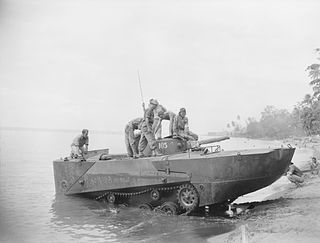 W
WThe Special Type 2 Launch Ka-Mi was the first amphibious tank of the Imperial Japanese Navy (IJN). The Type 2 Ka-Mi was based on the Imperial Japanese Army's Type 95 Ha-Go light tank with major modifications.
 W
WThe Type 2 Ke-To was a light tank of World War II, produced in small numbers for the Imperial Japanese Army as an improvement of the existing Type 98 Ke-Ni. It was not used in combat.
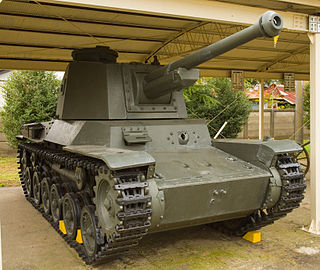 W
WType 3 Medium Tank Chi-Nu was a medium tank of the Imperial Japanese Army in World War II. Like the Type 1 Chi-He, this tank was an improved version of the Type 97 Chi-Ha. It incorporated a Type 3 75 mm tank gun, one of the largest Japanese tank guns during the war.
 W
WThe Type 3 Gun tank Ho-Ni III gun tank was a tank destroyer and self-propelled artillery of Imperial Japanese Army in World War II. The Type 3 Ho-Ni III superseded the Type 1 Ho-Ni I and its variant the Type 1 Ho-Ni II in production, and gave better protection to the crew due to having a completely enclosed superstructure.
 W
WThe Special Type 3 Launch Ka-Chi was an amphibious medium tank developed by the Imperial Japanese Navy in World War II. The Type 3 Ka-Chi was based on an extensively modified Imperial Japanese Army Type 1 Chi-He medium tank and was a larger and more capable version of the earlier Type 2 Ka-Mi amphibious tank.
 W
WThe Type 4 Ha-To was a self-propelled gun developed by the Imperial Japanese Army for use in World War II.
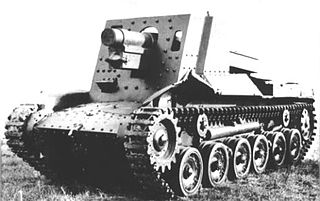 W
WThe Type 4 15cm self-propelled gun Ho-Ro was a self-propelled gun developed by the Imperial Japanese Army in World War II.
 W
WThe special Type 4 Launch Ka-Tsu was a Japanese amphibious landing craft of World War II. The first prototype was completed in late 1943 and trials were conducted off Kure in March 1944.
The Type 4 Ke-Nu was a light tank of the Imperial Japanese Army in World War II. It was a conversion of existing Type 95 Ha-Go light tanks, re-fitted with the larger turret of the Type 97 Chi-Ha medium tank.
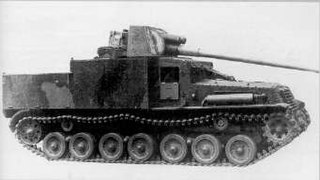 W
WThe Type 5 Na-To , officially known as the Experimental 7.5cm self-propelled anti-tank gun Na-To was the penultimate tank destroyer developed by the Imperial Japanese Army in 1945, during the closing stages of World War II.
 W
WThe Type 87 Chi-I medium tank a/k/a Experimental tank No.1 was the first indigenously designed tank produced by Japan for the Imperial Japanese Army. Development of this medium tank began in June 1925 and was completed by February 1927. During the field trials, the tank proved to be too heavy and under-powered. The project was cancelled and a new light tank design was finished by April 1928 and designated the Type 89 I-Go.
 W
WThe Type 89 medium tank I-Go was a medium tank used by the Imperial Japanese Army from 1932 to 1942 in combat operations of the Second Sino-Japanese War, at Khalkhin Gol against the Soviet Union, and in the Second World War. The Type 89B model was the world's first mass-produced diesel engine tank. The tank was armed with a short-barrel 57 mm cannon for knocking out pillboxes and masonry fortifications, and proved effective in campaigns in Manchuria and China, as the Chinese National Revolutionary Army had only three tank battalions to oppose them, which consisted primarily of Vickers export models, German Panzer Is, and Italian CV33 tankettes. The Type 89 was a 1920s design medium tank, built to support the infantry, and thus lacked the armor or armament of 1940s generation Allied armor; it was regarded as obsolete by the time of the 1939 battles of Khalkhin Gol, against the Soviet Union. The code designation "I-Go" comes from the katakana letter [イ] for “first” and the kanji [号] for "number". The designation is also transliterated Chi-Ro and sometimes "Yi-Go".
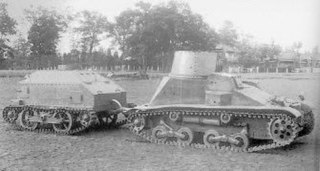 W
WThe Type 94 Disinfecting Vehicle and Type 94 Gas Scattering Vehicle was a variant of the Type 94 tankette adapted to chemical warfare by the Imperial Japanese Army. The Type 94 Disinfecting Vehicle and Type 94 Gas Scattering Vehicle were configured as an independent mobile liquid dissemination chemical vehicle with respective mobile disinfecting anti-chemical agents vehicle for support to Japanese chemical infantry units in combat.
 W
WThe Type 95 Ha-Gō was a light tank used by the Empire of Japan during the Second Sino-Japanese War, at Nomonhan against the Soviet Union, and in the Second World War. It proved sufficient against infantry but, like the American M3 Stuart light tank, was not designed to combat other tanks. Approximately 2,300 were produced, making it the most numerous Japanese armoured fighting vehicle of the Second World War.
 W
WThe Type 95 So-Ki was an armored railroad car of the Imperial Japanese Army. It was used for patrolling and guarding railway lines in both Manchuria and Burma. The chassis was based on the Type 95 Ha-Go Light Tank. The Type 95 So-Ki had light armor and no fixed weapons armament. Hand-held weapons by the crew would be the only armament available. It had a simple suspension system with bogie wheels suspended on bell cranks on each side of the chassis. The tracks were driven through the front sprockets. There were three small return wheels.
 W
WThe Type 97 Chi-Ha was a medium tank used by the Imperial Japanese Army during the Second Sino-Japanese War, the Battles of Khalkhin Gol against the Soviet Union, and the Second World War. It was the most widely produced Japanese medium tank of World War II.
 W
WThe Type 97 Shinhoto Chi-Ha was a Japanese medium tank used in World War II that was an upgrade to the original Type 97 Chi-Ha. The new version was designated Type 97-Kai ("improved") or Shinhoto Chi-Ha. This design was considered to be the best Japanese tank to have seen "combat service" during the Pacific War.
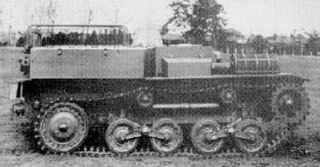 W
WThe Type 98 So-Da was an armored personnel and ammunition carrier used by the Imperial Japanese Army in World War II.
 W
WUnicharm Corporation is a Japanese company that manufactures disposable hygiene products, household cleaning products, specializing in the manufacture of diapers for both babies and adult incontinence, feminine hygiene products and pet care products.
 W
WYupo Corporation is a Japanese manufacturer of synthetic paper. It is the largest manufacturer of synthetic paper in the world with a 70% market share. It is owned by Mitsubishi Chemical and Oji Holdings, also known as the Oji Paper Company.